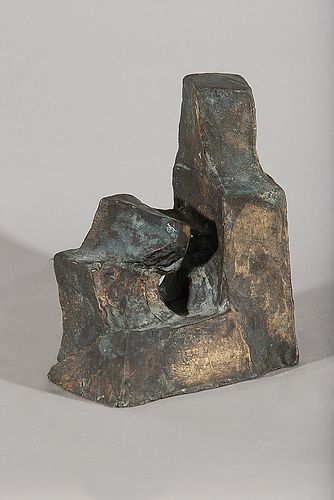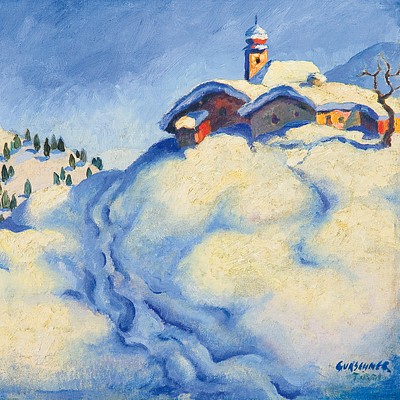FRITZ WOTRUBA* (Vienna 1907 - 1975 Vienna)
Lot 142
Estimate:
EUR€1,200 - EUR€2,600
$1,290.32 - $2,795.70
Absentee vs Live bid
Two ways to bid:
- Leave a max absentee bid and the platform will bid on your behalf up to your maximum bid during the live auction.
- Bid live during the auction and your bids will be submitted real-time to the auctioneer.
Bid Increments
| Price | Bid Increment |
|---|---|
| EUR€0 | EUR€10 |
| EUR€100 | EUR€50 |
| EUR€700 | EUR€100 |
| EUR€1,000 | EUR€200 |
| EUR€3,000 | EUR€300 |
| EUR€3,600 | EUR€400 |
| EUR€4,000 | EUR€500 |
| EUR€7,000 | EUR€1,000 |
| EUR€16,000 | EUR€2,000 |
| EUR€30,000 | EUR€3,000 |
| EUR€36,000 | EUR€4,000 |
| EUR€40,000 | EUR€5,000 |
| EUR€150,000 | EUR€10,000 |
About Auction
By Widder Auctions
Nov 23, 2023
Set Reminder
2023-11-23 11:00:00
2023-11-23 11:00:00
America/New_York
Bidsquare
Bidsquare : Masterpieces
https://www.bidsquare.com/auctions/widder-auctions/masterpieces-14076
Masterpieces by Austrian and German artists are coming up for auction in Vienna on November 23rd Widder Auctions office@widderauktionen.com
Masterpieces by Austrian and German artists are coming up for auction in Vienna on November 23rd Widder Auctions office@widderauktionen.com
- Lot Description
FRITZ WOTRUBA* (Vienna 1907 - 1975 Vienna)
Small sitting figure
bronze, 21,2 x 13,5 x 20 cm
Ed. Euro Art Wien
ESTIMATE °€ 1200 - 2600
STARTING PRICE °€ 1200
The sculptor Fritz Wotruba is considered one of the most important Austrian sculptors of the 20th century. In his work he increasingly dissolves figuration in favor of geometric abstraction. In 1926, the trained die engraver attended an evening nude course at the School of Applied Arts at the Austrian Museum of Art and Industry in Vienna and was accepted into Anton Hanak's sculpture class. There he met his future wife Marian Fleck, who was to give up her own artistic career in favor of her husband. Wotruba later attended Eugen Steinhof's class. Your “torso” was shown at the Secession in 1930. Wotruba did not attach great importance to the details; for him, the overall appearance was more important. His human depictions were significantly stretched, taking Egon Schiele and Anton Hanak as role models. Gustav Klimt, Egon Schiele and Oskar Kokoschka can still be felt in his graphic oeuvre and in his early torsos. In opposition to Viennese opulence, Wotruba found his own formal language. In addition to Wilhelm Lehmbruck and Anton Hanak, Georg Minne and his group of figures “Fraternité” were an important influence. Auguste Rodon and Aristide Maillol provided further aesthetic inspiration. He took part in the Biennale di Venezia and had solo exhibitions at the Würthle Gallery and the Folkwang Museum in Essen. In 1930 Wotruba became the youngest member of the “Kunstschau”. During Austrofascism, Wotruba went to Zurich, but was brought back by Carl Moll to work on Hanak's monument to Gustav Mahler, which was never completed. Josef Hoffmann was another supporter of Wotruba. In the 1930s, Wotruba got to know a number of intellectuals, visual artists and writers: Elias Canetti, Hermann Broch, Franz Theodor Csokor, Hans Erich apostle, Herbert Boeckl, Josef Dobrowsky, Georg Merkel, Carry Hauser, Alban Berg, Robert Musik and Franz Ullmann. Alma Mahler's daughter Anna took private lessons with Wotruba. In exile in Switzerland from 1939 to 1945, Wotruba was able to remain artistically active thanks to the protection of Hermann Haller, Philipp Etter, Manuel Gasser and Robert Lejeune. The collector Georg Reinhardt supported him financially and with orders. After the war, on Herbert Boeckl's initiative, Wotruba took over the master class for sculpture at the Academy of Fine Arts. Wotruba's students include Alfred Hrdlacek, Alois Heidel and Eduard Robitschko.
PLEASE NOTE:
The purchase price consists of the highest bid plus the buyer's premium, sales tax and, if applicable, the fee of artists resale rights. In the case of normal taxation (marked °), a premium of 24% is added to the highest bid. The mandatory sales tax of 13%, for photographys 20%, is added to the sum of the highest bid and the buyer's premium. The buyer's premium amounts to 28% in case of differential taxation. The sales tax is included in the differential taxation.
- Shipping Info
-
Shipping Terms
We will send you the invoice shortly after the auction. As soon as we have recieved the amount, the art can be picked up at Johannesgasse 9-13, 1010 Vienna. Please note that the buyer is responsible for pick-up and shipping of the lot.
Should you wish to ship your items, please contact:
Mailboxes
Email: oper@mbe-co.at
Tel: 01 5128855
Please note that storage fees may apply, should the pieces not be picked up within 14 days after invoicing for domestic and 28 days for international transportation.
Our team will be happy to assist you with any further information at office@widderauktionen.com or at 0043 676 555 66 10.
-
- Buyer's Premium



 EUR
EUR CAD
CAD AUD
AUD GBP
GBP MXN
MXN HKD
HKD CNY
CNY MYR
MYR SEK
SEK SGD
SGD CHF
CHF THB
THB















